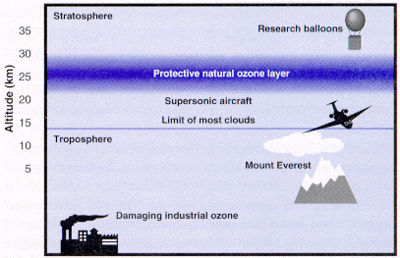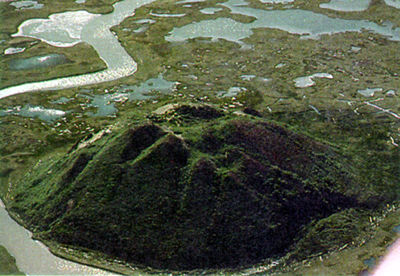Browse "Environment"
-
Article
Oldman River Society Case
Several decisions of the Supreme Court relate to environmental protection: Dryden Chemicals, Crown Zellerbach and Friends of the Oldman River Society.
"https://development.thecanadianencyclopedia.ca/images/tce_placeholder.jpg?v=e9dca980c9bdb3aa11e832e7ea94f5d9" // resources/views/front/categories/view.blade.php
https://development.thecanadianencyclopedia.ca/images/tce_placeholder.jpg?v=e9dca980c9bdb3aa11e832e7ea94f5d9
-
Macleans
Our Dying Seas
This article was originally published in Maclean’s magazine on October 5, 1998. Partner content is not updated.
"https://development.thecanadianencyclopedia.ca/images/tce_placeholder.jpg?v=e9dca980c9bdb3aa11e832e7ea94f5d9" // resources/views/front/categories/view.blade.php
https://development.thecanadianencyclopedia.ca/images/tce_placeholder.jpg?v=e9dca980c9bdb3aa11e832e7ea94f5d9
-
Article
Ozone Depletion
Ozone depletion is a chemical thinning of the OZONE LAYER in the stratosphere or upper atmosphere. Scientists determined in the 1970s that it is caused by ozone depleting substances (ODSs), particularly by the use of chlorofluorocarbons (CFCs).
"https://development.thecanadianencyclopedia.ca/images/tce_placeholder.jpg?v=e9dca980c9bdb3aa11e832e7ea94f5d9" // resources/views/front/categories/view.blade.php
https://development.thecanadianencyclopedia.ca/images/tce_placeholder.jpg?v=e9dca980c9bdb3aa11e832e7ea94f5d9
-
Article
Ozone Layer
The development of the ozone layer is thought to have been a significant factor permitting the evolution of life on Earth. Ozone is the main atmospheric gas that absorbs the biologically damaging part of the sun's ultraviolet radiation (UV radiation), known as UV-B (ultraviolet-biologically active).
"https://d2ttikhf7xbzbs.cloudfront.net/media/media/26ba232c-8118-479b-90f7-3cbcfb5175fe.jpg" // resources/views/front/categories/view.blade.php
https://d2ttikhf7xbzbs.cloudfront.net/media/media/26ba232c-8118-479b-90f7-3cbcfb5175fe.jpg
-
Article
Peat
Peat, living and partially decomposed organic matter, consists principally of decayed brown mosses, Sphagnum plants, sedges and other semiaquatic plant remains.
"https://development.thecanadianencyclopedia.ca/images/tce_placeholder.jpg?v=e9dca980c9bdb3aa11e832e7ea94f5d9" // resources/views/front/categories/view.blade.php
https://development.thecanadianencyclopedia.ca/images/tce_placeholder.jpg?v=e9dca980c9bdb3aa11e832e7ea94f5d9
-
Article
Permafrost
Permafrost is ground remaining at or below 0°C continuously for at least two years. About 50 per cent of Canada is underlain by permafrost, mainly in the Arctic Archipelago, Yukon, Northwest Territories and Nunavut.
"https://d2ttikhf7xbzbs.cloudfront.net/media/media/5e658751-a56e-4535-9950-f641ec565a97.jpg" // resources/views/front/categories/view.blade.php
https://d2ttikhf7xbzbs.cloudfront.net/media/media/5e658751-a56e-4535-9950-f641ec565a97.jpg
-
Article
Persistent Organic Pollutants
Persistent organic pollutants (POPs) are carbon-based chemical compounds or groups of chemical compounds of anthropogenic (resulting from human activities) origin that are biologically and chemically inert.
"https://development.thecanadianencyclopedia.ca/images/tce_placeholder.jpg?v=e9dca980c9bdb3aa11e832e7ea94f5d9" // resources/views/front/categories/view.blade.php
https://development.thecanadianencyclopedia.ca/images/tce_placeholder.jpg?v=e9dca980c9bdb3aa11e832e7ea94f5d9
-
Article
Pesticide
Substances used to control pests include insecticides (for control of insects), fungicides (for disease-causing fungi), herbicides (for weeds), rodenticides (for rodents), avicides (for birds), piscicides (for fish) and nematicides (for nematodes).
"https://development.thecanadianencyclopedia.ca/images/tce_placeholder.jpg?v=e9dca980c9bdb3aa11e832e7ea94f5d9" // resources/views/front/categories/view.blade.php
https://development.thecanadianencyclopedia.ca/images/tce_placeholder.jpg?v=e9dca980c9bdb3aa11e832e7ea94f5d9
-
Article
Pipelines in Canada
Pipelines are systems of connected pipes used to transport liquids and gases — namely oil and natural gas — across long distances from source to market. More than 840,000 km of pipelines criss-cross the country. They represent part of the oil and gas sector which directly and indirectly employs approximately 740,000 people. According to Natural Resources Canada, the sector earns the government an average of $20 billion in royalties, fees and taxes each year (see Natural Resources in Canada). It also contributes nearly 11 per cent of Canada’s gross domestic product. Pipelines, however, have been controversial in Canada. Pipelines help transport fossil fuels and research indicates that fossil fuel use, is significantly contributing to climate change. In recent years, Indigenous groups, environmentalists, municipalities and labour unions have opposed numerous pipeline projects due to the risk of contaminated local waterways from spills and leaks. (See also Environmental Movement in Canada).
"https://d2ttikhf7xbzbs.cloudfront.net/media/media/d582fdd1-da33-4f4e-bb6a-d3573745bd88.jpg" // resources/views/front/categories/view.blade.php
https://d2ttikhf7xbzbs.cloudfront.net/media/media/d582fdd1-da33-4f4e-bb6a-d3573745bd88.jpg
-
Article
Plant Disease
Plant disease can decrease the economic, aesthetic and biological value of all kinds of plants. Plant pathology (phytopathology) is the study of the nature, causes, prevention and socioeconomic aspects of plant diseases.
"https://development.thecanadianencyclopedia.ca/images/tce_placeholder.jpg?v=e9dca980c9bdb3aa11e832e7ea94f5d9" // resources/views/front/categories/view.blade.php
https://development.thecanadianencyclopedia.ca/images/tce_placeholder.jpg?v=e9dca980c9bdb3aa11e832e7ea94f5d9
-
Article
Reforestation
Many people believe a new sapling must be planted to replace every tree that is harvested. In fact, the FOREST regenerates naturally. After logging, young shoots grow and develop quickly because they have more room and good exposure to sunlight.
"https://development.thecanadianencyclopedia.ca/images/tce_placeholder.jpg?v=e9dca980c9bdb3aa11e832e7ea94f5d9" // resources/views/front/categories/view.blade.php
https://development.thecanadianencyclopedia.ca/images/tce_placeholder.jpg?v=e9dca980c9bdb3aa11e832e7ea94f5d9
-
Article
Resource Management
Resource management usually refers to the responsibility of governments to ensure that natural resources under their jurisdiction are used wisely or conserved.
"https://development.thecanadianencyclopedia.ca/images/tce_placeholder.jpg?v=e9dca980c9bdb3aa11e832e7ea94f5d9" // resources/views/front/categories/view.blade.php
https://development.thecanadianencyclopedia.ca/images/tce_placeholder.jpg?v=e9dca980c9bdb3aa11e832e7ea94f5d9
-
Article
Resource Rights
Natural-resource development has played a major role in Canada's economy and continues to be a focus of national concerns.
"https://d2ttikhf7xbzbs.cloudfront.net/media/media/b714baa3-b8d8-4657-a436-7f27a8b1c819.jpg" // resources/views/front/categories/view.blade.php
https://d2ttikhf7xbzbs.cloudfront.net/media/media/b714baa3-b8d8-4657-a436-7f27a8b1c819.jpg
-
Article
Resource Use
Since prehistoric times, the inhabitants of what is now Canada used vegetation and animals for food, clothing and shelter. They fashioned implements and ornaments from MINERALS and, after the arrival of Europeans, used furs for trading.
"https://development.thecanadianencyclopedia.ca/images/tce_placeholder.jpg?v=e9dca980c9bdb3aa11e832e7ea94f5d9" // resources/views/front/categories/view.blade.php
https://development.thecanadianencyclopedia.ca/images/tce_placeholder.jpg?v=e9dca980c9bdb3aa11e832e7ea94f5d9
-
Article
Silviculture
Silviculture is the branch of FORESTRY that deals with establishing, caring for and reproducing stands of trees for a variety of forest uses including wildlife habitat, timber production and outdoor recreation.
"https://development.thecanadianencyclopedia.ca/images/tce_placeholder.jpg?v=e9dca980c9bdb3aa11e832e7ea94f5d9" // resources/views/front/categories/view.blade.php
https://development.thecanadianencyclopedia.ca/images/tce_placeholder.jpg?v=e9dca980c9bdb3aa11e832e7ea94f5d9
